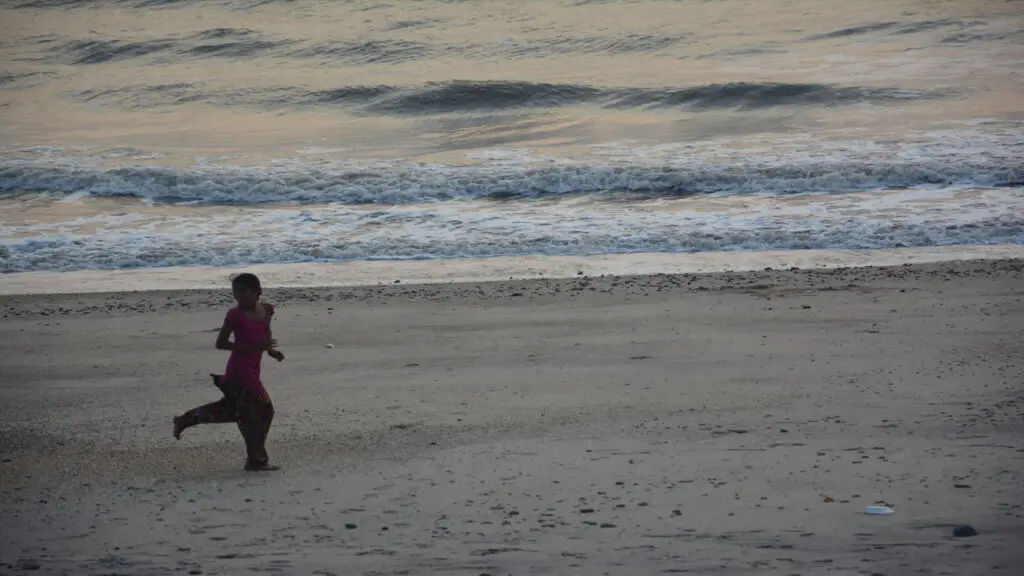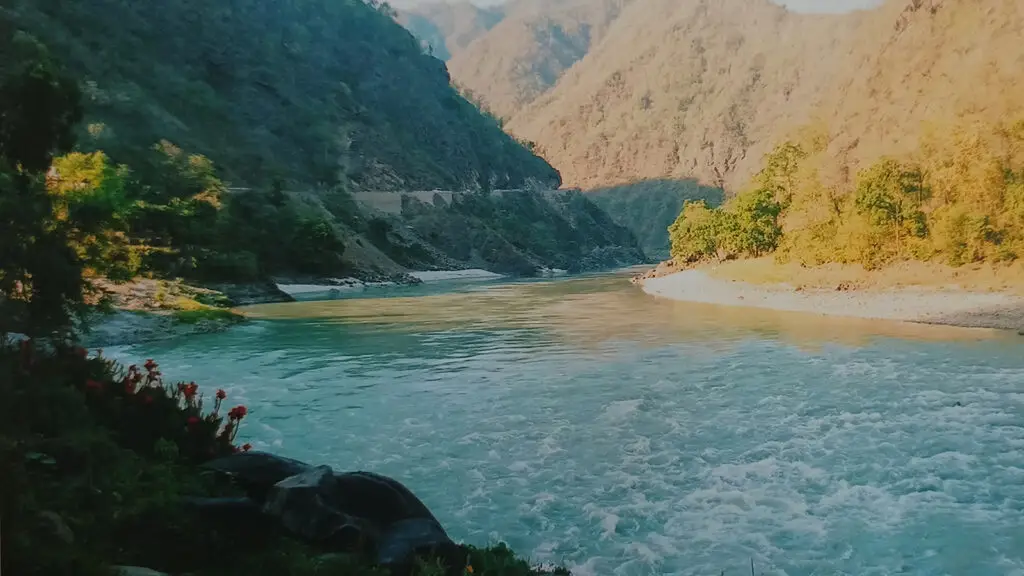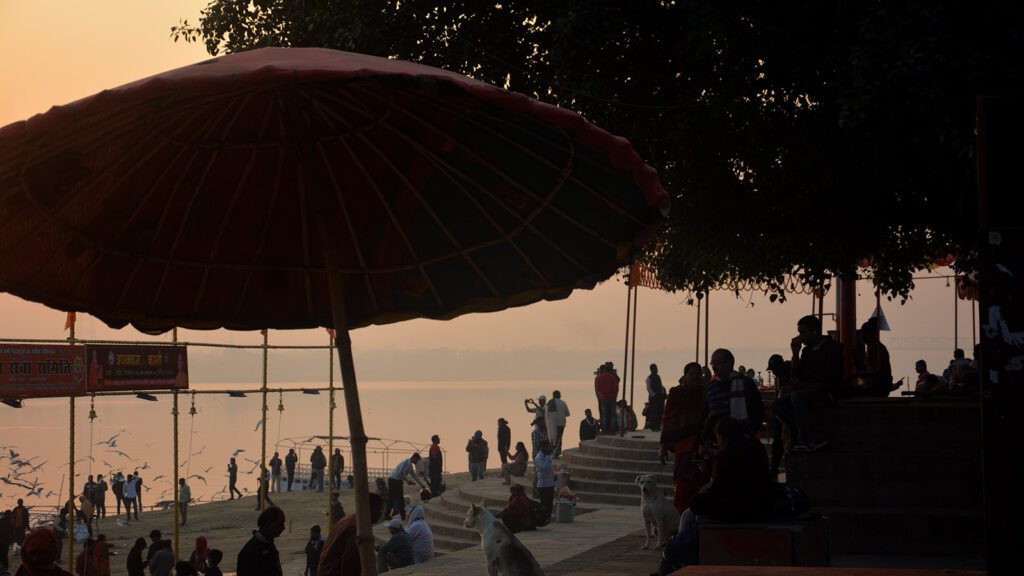Ancient Hampi
 I was introduced to Hampi during my graduation by a classmate who had taken on a thesis project on these ruins. Hampi was recognized as a world heritage site quite early on. My classmate described the place as one of the most romantic ruins he had visited. Young and immature, I was unable to grasp the meaning of the romance of the ruins. I guess one can understand it only after visiting Hampi.
I was introduced to Hampi during my graduation by a classmate who had taken on a thesis project on these ruins. Hampi was recognized as a world heritage site quite early on. My classmate described the place as one of the most romantic ruins he had visited. Young and immature, I was unable to grasp the meaning of the romance of the ruins. I guess one can understand it only after visiting Hampi.
However, this particular description made me highly interested in the place. Over the years, every visitor to this place recounted the same enchanting stories of its history, landscape, architecture, and ethereal quality. All of Hampi seems to cast a spell on anyone who visits.
So, when I finally planned a visit in November 2019, anticipation was high. I was ready to be enchanted and taken in by the place. By the end of my three-day visit, I was overwhelmed by the spell the place had on me. I realized how true all the stories of these visits had been.
The Enchanting History of Hampi
In its local tradition, Hampi is believed to be the place of Kishkinda, the birthplace of Lord Hanuman, and the kingdom of Vali and Sugriva, the monkey kings. The place holds significant importance for the populace since it is believed that Lord Rama and Lakshman stayed there for a long period while they waited for the monkey army to join them in the rescue of Sita.
In recorded history though, this place has been the capital of the erstwhile Vijayanagara Kingdom. Two brothers, Harihara I and Bukka founded the kingdom in the early 14th century and the empire saw the rule of four great dynasties for over 300 years. It reached its zenith during the reign of Krishnadeva Raya, (Yes, the same one of Tenali Raman fame), and his younger brother Achyuthadeva Raya. Most of the magnificent architecture was built during their reign. 
The period is also well-documented by visiting Europeans who were dazzled by the opulence, wealth, and power of the empire. As has been with all empires and kingdoms, this one too saw its decline and collapse when neighbouring Deccan Sultanates combined to bring it down. Over time, the city was ransacked many times, leading to abandonment, and leaving behind ruins for posterity.
Arrival and First Impressions
Set in rocky hills on the banks of the Tungabhadra River, the place boasts magnificent temples with beautiful ruins spread all over the landscape dominated by boulders of all sizes.

Situated in North Karnataka, Hampi can be reached with a short ride from Hospet, the nearest railway station, well-connected to many important train junctions throughout India. We arrived at our stay late in the evening at Kamlapur village on the outskirts of this UNESCO World Heritage site spread over more than 4000 hectares. We realised this was the best place to stay, and one can cover the entire place on foot, bicycle, or local auto-rickshaws, which are readily available from here.
 Excited, we rose early the next morning. The journey from our stay to the most visited group of monuments took us through a rugged landscape of granite boulders and small scattered ruins, preparing us for the open museum that Hampi is. The entire exploration of the day was delightful, engaging, and organic.
Excited, we rose early the next morning. The journey from our stay to the most visited group of monuments took us through a rugged landscape of granite boulders and small scattered ruins, preparing us for the open museum that Hampi is. The entire exploration of the day was delightful, engaging, and organic.
Exploring the Ruins
You don’t need a guide here as this place is to be experienced more than understood. The place takes you in, guides you, and speaks to you in that enchanted language of ruins, goading you to explore the place on your own.
 We began our visit with Narasimha Temple where our rickshaw dropped us. This is a small site with an open idol of Narasimha. The idol is huge yet not imposing. This small yet significant place is the best way to start the exploration.
We began our visit with Narasimha Temple where our rickshaw dropped us. This is a small site with an open idol of Narasimha. The idol is huge yet not imposing. This small yet significant place is the best way to start the exploration.
Our next stop was Krishna Mandir, a magnificent temple complex with a peripheral colonnade and a central intricately carved grand shrine with mandapas and gopuram. This temple has a grand bazaar and pushkarini (water body) in front of it. Set against hills and boulders, the place felt ethereal. 
The view of Hemakuta Hill was inviting from here, and we were naturally led to the flat top by a series of stairs. A series of small and big temples, multi-story pavilions and some beautiful Jain shrines are scattered all over the top. The place offers stunning views of the surroundings and is known for its sunset. Exploration from south to the north of the hilltop led us to Moola Virupaksha Temple, a small and beautiful shrine of Shiva on the mountaintop.
The Magnificent Virupaksha Temple and Hampi Bazaar
 As we moved further, at the base of the hill on the north was the most popular and grand Virupaksha Temple. As the name suggests the temple is dedicated to Lord Shiva.The place is bustling with rituals and devotees from surrounding areas. It features grand gopurams and shikhara, which are in line with other important temples of the place.
As we moved further, at the base of the hill on the north was the most popular and grand Virupaksha Temple. As the name suggests the temple is dedicated to Lord Shiva.The place is bustling with rituals and devotees from surrounding areas. It features grand gopurams and shikhara, which are in line with other important temples of the place.

The architecture here borrows from various and diverse styles of Hindu temples and combines them to make for a unique style. The effect is beautiful, out of the world, and magnificent.
 Built in the 15th and 16th centuries, this temple architecture symbolizes Hindu resurgence amid the Islamic influence in other parts of the subcontinent.
Built in the 15th and 16th centuries, this temple architecture symbolizes Hindu resurgence amid the Islamic influence in other parts of the subcontinent.
Stretching in front of the Virupaksha Temple is Hampi Bazaar. The place, with its long axis and multi-level ruins along the path, has the power to transport you back to its heyday when the place must have bustled with colourful merchandise and equally interesting traders and buyers from all over the world.
Riverside Exploration and Coracle Ride
A detour from the bazaar led us to the riverside path along the bank, dotted with rocky terrain, multi-storied pavilions and stone art on the floor. 
Here we opted for a coracle ride, a circular bowl-shaped boat, which provided us with a beautiful pause during our relentless exploration of the place. The coracle takes you to the Anegundi area, believed to be Lord Hanuman’s birthplace. The surrounding hills provide mesmerizing views with precariously placed boulders and intermittent ruins.
 As we resumed along the path, it brought us to the Courtesans’ Bazaar. Unlike Hampi Bazaar, this one is deserted. This could be owing to it being out of the major tourist circuit. At the end of the bazaar is Achyutaraya Mandira.This temple, with its peripheral colonnade, is one of the most romantic places we encountered, its ruins exuding a unique charm. The silence spoke to us through the ruins, and we spent some of the most beautiful moments here before heading to Matanga Hill nearby.
As we resumed along the path, it brought us to the Courtesans’ Bazaar. Unlike Hampi Bazaar, this one is deserted. This could be owing to it being out of the major tourist circuit. At the end of the bazaar is Achyutaraya Mandira.This temple, with its peripheral colonnade, is one of the most romantic places we encountered, its ruins exuding a unique charm. The silence spoke to us through the ruins, and we spent some of the most beautiful moments here before heading to Matanga Hill nearby.

As we reached the top, we had a clear view of Hampi Bazaar, with Virupaksha Mandir at the other end. The grand Nandi statue at the base of the hill added a prominent highlight to the view.
Exhausted and overwhelmed by the day’s exploration, we decided to spend our evening at the Kadalekalu Ganesha Temple. As the setting sun’s orange beams illuminated its multiple columns, the evening turned truly memorable.
Other Important Temples of Hampi
The next two days were equally engaging, delightful, and demanding. We set out to explore temples set in different places, each as magnificent as another.
 The most beautiful and fascinating of all temples is dedicated to Lord Vitthala. The carvings in granite are simply out of this world. The slender columns are carved to produce music when struck. Indeed, one of the mandapas is called the Sangeet Mandapa for the ability of the architecture to produce music. The musical columns and beautifully carved granite chariot in front of the temple are the most celebrated pieces of sculpture from Hampi.
The most beautiful and fascinating of all temples is dedicated to Lord Vitthala. The carvings in granite are simply out of this world. The slender columns are carved to produce music when struck. Indeed, one of the mandapas is called the Sangeet Mandapa for the ability of the architecture to produce music. The musical columns and beautifully carved granite chariot in front of the temple are the most celebrated pieces of sculpture from Hampi.
The place feels divine, and one can spend eternity appreciating the beauty and setting of the place. As we moved from one place to another, we visited Raghunath Temple atop Malyavanta Hill where Lord Ram and Lakshman are believed to have resided. The place is tranquil and spiritual, offering stunning views of the surrounding wilderness. We visited Bhima’s Gateway and Jain temples on the route.
The exploration seemed endless even as the day ended at Pattabhirama Temple at the other end of the village we were staying at.
The Royal Complex
The last day was saved for the Royal Complex. Till then we were visiting abodes of gods, grand & magnificent, and set in a landscape of equal grandeur. The private royal chambers turned out to be a different story though.
 Delicate, ethereal, and beautiful, the architecture here borrowed from contemporary times of the buildings, especially for Queen’s Bath, which is an extensive palace with a hammam and other chambers. The Zenana enclosure, elephant stable, guards’ quarters, etc., are also part of this.
Delicate, ethereal, and beautiful, the architecture here borrowed from contemporary times of the buildings, especially for Queen’s Bath, which is an extensive palace with a hammam and other chambers. The Zenana enclosure, elephant stable, guards’ quarters, etc., are also part of this.
The most beautiful of places in the private complex is the Lotus Mahal. The building is not shaped like a lotus but borrows its essence in terms of layering, beauty, and pattern. The placing of multiple arches in the pavilion makes it a transparent and inviting space. It has the power to charm you with its feminine and delicate architecture.
The other part of the Royal Complex is public and grand, with the colossal Mahanaavami Dibba, a platform where the king sat during processions, taking center stage. The dibba is surrounded by multiple ruins and plinths of various palaces. Pushkarini, the stepwell, watch towers and other places add to the appeal.
Romance of the Ruins
 As our journey through Ancient Hampi concluded, we were left in awe of its timeless beauty and historical grandeur. Each ruin, temple, and monument told a tale of a bygone era, blending seamlessly with the rugged landscape. The grandeur of the Virupaksha and Vitthala temples, the serene beauty of the river paths, and the delicate elegance of the Lotus Mahal enriched our experience, leaving us spellbound.
As our journey through Ancient Hampi concluded, we were left in awe of its timeless beauty and historical grandeur. Each ruin, temple, and monument told a tale of a bygone era, blending seamlessly with the rugged landscape. The grandeur of the Virupaksha and Vitthala temples, the serene beauty of the river paths, and the delicate elegance of the Lotus Mahal enriched our experience, leaving us spellbound.
The temples, boulders, hills, rivers, and remnants of an empire come together in a dream-like poetic landscape that enchants every visitor, ensuring the romance of the ruins stays with you forever.





Visiting a place of historic importance always makes a fascinating adventure. More so because of its architectural brilliance and the stories connected to each stone of the place.
You have described the same in a beautiful prose , bringing alive a wonderful caricature of the place and the associated tales of the bygone era.
Many such destinations like Mandu , the fort of Agra, Nalanda University and a few more- evoke a similar kind of experience.
Thanks for sharing your thoughts.
Thanks for being a regular visitor
Superb description of a dream destination. Your blog took me down the memory lane. I was transported to the time I had spent at Hampi charmed by its many delights ……as I roamed around admiring its many hidden treasures I was mesmerised by its endless beauty. 👌👏👍❤️
Thank you Kabraji